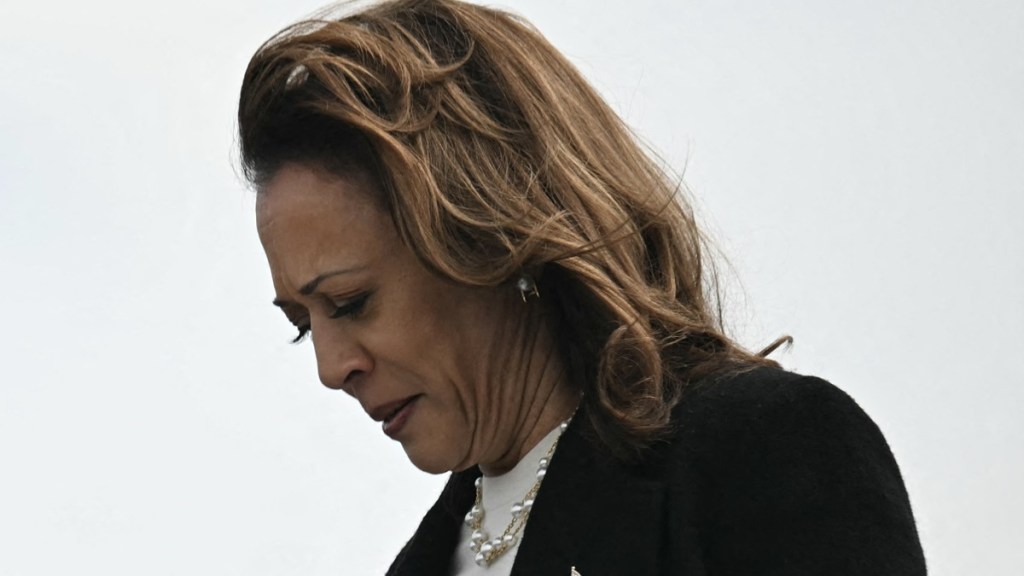Polls indicate that Kamala Harris is fighting to hold on to the working class vote, which was traditionally a significant part of the Democratic base. A poll breakdown by Harry Enten, a political analyst for CNN, reveals that while Harris still has the lead when it comes to union households, their support has largely swung from the Democrats to the Republicans over the last 20 years. Just a month away from the 2024 presidential election, Harris is set to hold a rally in Flint, Michigan on Friday, October 4, where she aims to garner support in the heart of the “blue wall,” states which have voted for the Democratic presidential nominee from 1992 to 2012. On Wednesday, Harris offered support for the port strike workers. However, many blue-collar and non-college voters are leaning toward Donald Trump instead.
How does Kamala Harris poll with union voters?
Harris has a 9-point margin over Trump when it comes to union households, according to Enten. But that is a steep decline compared to Bill Clinton’s 30-point margin in 1992 and Joe Biden’s 19-point margin in 2020 over their respective Republican nominees.
Enten also points out a substantial difference in how trade school or vocational graduates are voting this time around. Trump holds a large 31-point margin over Harris when it comes to this voting block, compared to Bill Clinton’s 7-point margin over Bush, in pre-election polls. He says that Trump has “a very, very strong position” here, taking away what was previously a core group from the Democrats. In a post on X, formerly Twitter, the analyst states that “Trump has more working class support than any GOP presidential candidate in a generation.”
Supporting this claim is a crosstab aggregator that compiles polls of the 2024 presidential election between September 11 and September 30. It shows a clear divide between non-college and college graduates, with the former giving Trump about a 13-point lead and the latter giving Harris about a 17-point lead. The split between these two voting blocks expands further when it comes to white non-college voters, who support Trump with a 26-point margin.
In September, the Teamsters Union chose not to endorse Harris either, despite doing so for Biden in 2020. According to internal polls held from July to September, its members broadly support Trump by more than a 20-point margin. Notably, a phone poll in September had Trump at 58% and Harris at 31%.
Why is Kamala Harris struggling with labor votes?
There are several reasons why experts believe Harris is not receiving as much labor support as past Democratic presidential nominees have. Some of it is due to decisions made by Biden when it comes to unions, a shift in economic messaging from Harris, and Trump appealing to working class voters.
Specifically, the Teamsters Union cited that neither Harris nor Trump “promised not to intervene to force similar RLA contracts, which undermines workers’ bargaining leverage.” This refers to Biden using his executive power under the Railway Labor Act in 2022 to force railway workers to accept a new contract without having member support. This decision has made them withdraw its support from Harris as a result.
According to economics reporter Gavin Bade in Politico, Harris has aimed her economic message toward “professional-class concerns” in an attempt to win the suburban vote, many of whom were uneasy voting for Biden before he dropped out of the race. Where Biden led with manufacturing and industrial policies in his campaign speeches, Harris focused more on the “care economy” with a child tax credit and financial assistance for small businesses and homeowners. This perceived weakness with working class voters is partly why she selected Minnesota governor Tim Walz, who is known for championing unions, as her vice president.
More broadly, blue-collar voters have gradually shifted their support toward Trump, as explained by The New Yorker. The perception is that the Democratic Party “speaks mainly for coastal elites and upscale professionals” — Kamala Harris is a prosecutor from California — instead of people who live in Rust Belt states. where two-thirds of voters don’t have a college degree.
Some also point to Bill Clinton signing NAFTA in 1993, which led to numerous factories moving production elsewhere and slashing working-class jobs. Though Biden strengthened the National Labor Relations Board (NLRB), in contrast to Trump, many voters had a “lack of information” about this. However, they do vividly remember Trump’s stimulus checks. A Harris canvasser, Audra Traynham, said that while she could relate to Harris talking about building a strong middle class, she believes the reality is that the middle class has become “the working poor” instead.




